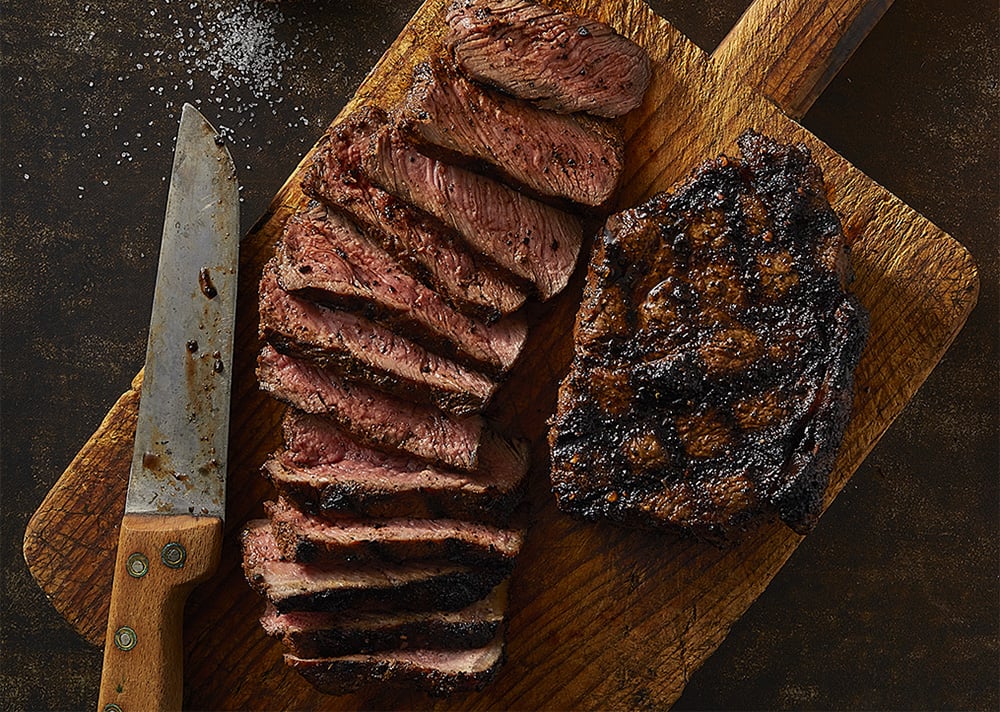In the land of the pampas and the birthplace of the tango, Argentina's culinary landscape is as rich and diverse as its cultural heritage. At the heart of Argentine grilling tradition lies the beloved "bife de vacío," better known as flank steak in English. This delectable cut of beef holds a special place in Argentine cuisine, cherished for its succulence, robust flavor, and tender texture, making it a centerpiece of any traditional asado (barbecue) experience.
Origin and Butchering:
The bife de vacío is derived from the flank of the cow, a muscle that is well-exercised but generously marbled with intramuscular fat. This marbling is what lends the flank steak its mouthwatering tenderness and depth of flavor. In Argentina, butchers meticulously prepare this cut by removing the tough outer membrane, ensuring the meat is trimmed and ready for grilling.
Marination:
Marination is an essential step in preparing the bife de vacío for the grill, and Argentine seasoning is kept simple yet potent to enhance the natural flavors of the beef. The steak is typically seasoned with coarse salt, freshly ground black pepper, and perhaps a touch of garlic powder or other preferred spices. Unlike some other cuts of meat, the bife de vacío does not require an extensive marination period; its inherent flavor shines through with just a light coating of seasonings.
Grilling:
Argentine grilling, performed on the iconic parrilla, is a time-honored tradition steeped in skill and reverence. Before the cooking process begins, the grill master carefully arranges the glowing embers or charcoal to achieve the perfect heat distribution. The bife de vacío is then placed on the hot grill, where it sizzles and releases its tantalizing aroma.
To balance a beautifully caramelized crust and a juicy, medium-rare interior, the asador (grill master) diligently tends to the bife de vacío, turning it at just the right moment. The cooking process is an art of precision, ensuring that each bite boasts a tender, succulent texture and bursts with the unique smoky essence imparted by the grill.
Serving:
In Argentina, the bife de vacío is often presented as a whole steak, allowing its
natural beauty and charred exterior to captivate diners. However, it is also common to find the steak sliced thinly across the grain to enhance tenderness. This classic cut often served with rustic bread or chimichurri sauce, showcases the beef's mouthwatering juiciness and robust flavor.
Accompaniments for the bife de vacío vary but typically include simple yet complementary sides, such as a crisp salad with fresh tomatoes, onions, and lettuce. Grilled vegetables, like bell peppers and eggplants, are also popular choices. To elevate the experience, Argentinians often pair the bife de vacío with a full-bodied Malbec wine, showcasing the country's renowned winemaking tradition.
Conclusion:
The bife de vacío, a celebrated gem in Argentine culinary heritage, embodies the nation's passion for grilling and culinary artistry. With its tender texture, tantalizing aroma, and bold flavor profile, this savory flank steak, prepared to perfection on the parrilla, captivates the hearts and palates of locals and visitors alike. Whether savored as a whole steak or sliced with finesse, the bife de vacío offers an authentic taste of Argentina's cultural identity and continues to be an essential element in the nation's beloved tradition of asado gatherings.

